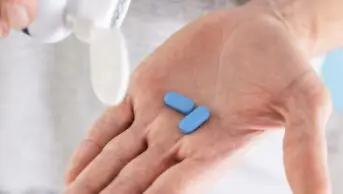After growing reports of misuse and harm, including increased implication in drug-related deaths, the Advisory Council on the Misuse of Drugs recommended that tramadol should be reclassified as a class C, Schedule 3 drug. This was enacted in June 2014.
In primary care, the main change required was the prescription writing requirements for Schedule 2 and 3 Controlled Drug (CD) (e.g. quantity prescribed to be in words and figures). Most prescriptions are computer generated so, once the systems were updated, there was no significant impact on prescribers. Other issues were its exclusion from patient group directions and emergency supply arrangements.
In hospitals, processes for ordering stock and supplying to patients on discharge had to change with the CD schedule 3 status. This was a major alteration to existing practice and more time consuming for all staff because most systems for ordering CDs and generating prescriptions are manual.
NHS Scotland tramadol usage between May 2014 and September 2015 was obtained from the Prescribing Information System for Scotland and the Hospital Medicines Utilisation Database, provided by NHS National Services Scotland. In May 2014 there were more than 2 million defined daily doses (300mg) issued or dispensed across NHS Scotland; of which 97% is in primary care. Primary care use of tramadol dropped by 11% in June 2014 and has risen slightly since then, although still remains below the level prescribed in May 2014. In hospitals, the use in June 2014 was 54% of the previous month and has reduced more in the intervening period. The overall reduction in tramadol use post-regulatory change is 10%.
Further review was conducted on other low dose opioids. In hospitals, dihydrocodeine use increased by 18%. In primary care, the largest increase was in the use of codeine phosphate (11%). There is little change in the use of co-codamol and co-dydramol. Also, investigation in NHS Greater Glasgow and Clyde shows increased use of morphine 10mg/5ml oral solution in hospitals, encouraged by a change in local policy.
Classification as a CD has only had a small effect on tramadol prescribing. The data suggests that the main change driver relates to process rather than clinical risk. This is not to suggest that prescribers do not appreciate clinical risks. Patients still require analgesia and it is not necessarily safer to prescribe a different opioid or a non-opioid such as a non-steroidal anti-inflammatory drug. The overdose risks for patients in medical care are likely to be different than for those most at risk of drug-related deaths (i.e. people who misuse multiple drugs in combination with alcohol).
The reclassification also means there are greater restrictions on import and export of tramadol and that possession is a criminal offence without a valid exemption. It may be that these avenues are where the safety gains are to be made rather than through alteration of clinical practice. The publication of drug-related death figures for 2014 onwards may illustrate that change in tramadol classification has delivered the anticipated safety benefits.
Audrey Thompson
Lead pharmacist controlled drugs governance, NHS Greater Glasgow and Clyde
On behalf of the Controlled Drugs Accountable Officers’ Network (Scotland)


